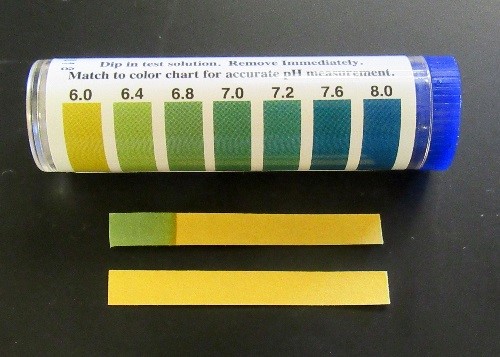Milk Calcium and pH for Prediction of Foaling
Patrick M. McCue, DVM, PhD, Diplomate American College of Theriogenologists
Colorado State University
Late-term pregnant mares should be monitored closely and ideally the foaling should be attended by a knowledgeable and responsible person who can intervene appropriately if something goes awry. The last few days prior to foaling can be especially tedious for an owner, farm manager or the foaling staff.
Clinical signs of impending foaling begin subtly several weeks prior to the actual date of delivery. Changes become more dramatic and occur more rapidly as day of foaling approaches.
The first noticeable change is in the mammary gland, which begins to enlarge a couple weeks prior to term. Mammary gland development will be much more pronounced in mares that have previously had foals than in maiden mares. The teats or nipples will remain relatively flat until the last few days prior to foaling, at which time they will fill with milk.
The secretion by the mammary gland changes from a clear straw-colored fluid to a more turbid milk-like substance as the due date draws near. The mammary secretion becomes thick and honey-like as colostrum develops within the last day or two prior to foaling.
A thick dried exudate is often observed to accumulate at the ends of the teats 24 to 48 hours prior to foaling. This ‘waxing’ of the teat ends is due to colostrum that has slowly leaked from the udder and dried upon contact with air and is a classic sign that foaling is imminent. The extent of waxing can range from tiny droplets to elongated candle wax-like formations that project up to an inch from the teat ends. However, not all mares will wax up and the duration from onset of waxing to foaling can be quite variable. In addition, some mares will transiently develop wax at the teat ends 1 to 2 weeks prior to foaling.
A good rule of thumb is approximately 70 % of mares ‘wax-up’ prior to foaling and about 70 % of those mares give birth within a day or two after waxing. So you shouldn’t wait for all mares to ‘wax-up’ before you start staying up nights.
Evaluation of calcium levels in mammary gland secretions (milk) is useful in prediction of when mares are likely to foal and are equally useful in predicting that a given mare is unlikely to foal in the next few days. Calcium concentration in milk increases sharply as the mare approaches the time of foaling. It is recommended that testing be initiated several days prior to the expected due date. Testing in mares with an unknown breeding date should begin when significant udder development is noted and a small amount of secretion can be obtained. The two commercial milk calcium tests marketed for prediction of foaling are Predict-A-FoalTM and FoalWatchTM (Figure 1).
Article
Figure 1. Milk calcium tests for prediction of foaling.
Another test to predict foaling that has been discussed extensively in equine forums over the past few years is pH, or measurement of the acidity of the mammary fluid. The pH of mammary fluid from pregnant mares remains around 7.4 for several days leading up to the time of foaling. In many mares, the milk pH drops to approximately 6.4 within 12 hours prior to foaling. pH can be measured with an electronic meter or with pH paper. A meter is more accurate, but certainly more expensive. If pH paper is used, it is recommended that a paper that detects pH in the range of 6.0 to 8.0 in increments of 0.4 be obtained (Figure 2). pH paper that measures a broader range will be less accurate within the range of pH changes in equine milk. The pH test is convenient and inexpensive, but unfortunately, not all mares experience a drop in milk pH prior to giving birth. In addition, a few mares show a drop in pH for several days prior to foaling.
Figure 2. pH test strips that can be used to monitor pH in mare mammary secretions.
A graph showing the milk calcium levels and pH for an individual mare for a 10 day period preceding foaling is presented in Figure 3.
Figure 3. Graph of milk calcium levels (red line) and pH (green line) in a mare prior to foaling (arrow).
Animal Reproduction Systems
800-300-5143









